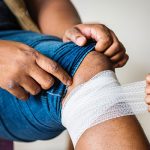If you have ever used a new skincare product, only for your skin to become red and irritated, you may have experienced contact dermatitis. It is described as a condition that occurs when chemicals coming into contact with your skin cause an adverse reaction.
The majority of cases are not too serious. However, the afflicted person may experience an unpleasant amount of irritation and itching until over.
Here, our expert dermatologists in Columbia, South Carolina, will provide a thorough examination of what contact dermatitis is, the causes, what the symptoms are, when you should seek a medical opinion and lastly, how to prevent it.
What is contact dermatitis?
As mentioned above, contact dermatitis is a red and itchy rash caused by direct contact with a substance or allergic reaction from it. It is not life-threatening or contagious. However, it can be very uncomfortable throughout the duration.
There are two primary types of contact dermatitis.
First, there is irritant contact dermatitis, which accounts for 80 percent of all contact dermatitis cases. The second variant is allergic contact dermatitis, which is a delayed allergic reaction that presents as a rash a day or two after the skin is exposed to an allergen.
Given there are two types of contact dermatitis, there are two types of causes that we must examine closer.
What are the causes of contact dermatitis?
We can start with irritant dermatitis. As this is the most common variety of contact dermatitis, multiple things fall under the umbrella of irritant dermatitis. Here are just a few of the likely suspects to cause irritant dermatitis.
Irritant dermatitis is caused by exposure to irritants such as detergents, solvents, soaps, bleach, nickel-containing jewelry or even clothes with metal snaps.
Next, there’s the least common variant, allergic contact dermatitis.
Allergic dermatitis is a result of coming into contact with something that you’re sensitive to, otherwise known as an allergen. These include nickel, medications, balsam of Peru, formaldehyde, personal care products, poison ivy and more.
What are the symptoms?
There are several symptoms associated with both the irritant and allergic versions, but some may be unique to one version of contact dermatitis alone.
The symptoms for irritant dermatitis may include: blistering, cracking skin, swelling, feeling stiff or tight, ulcerations or open sores.
Allergic dermatitis may cause slightly different symptoms such as flaky skin, hives, oozing blisters, red skin, skin that appears leathery, burning sensation, extreme itching, sensitivity to the sun and swelling.
Symptoms may also vary on your own sensitivity to the irritant or allergen.
How can you prevent contact dermatitis?
The primary way to avoid contact dermatitis from occurring is to avoid the substance causing it.
You can do this by purchasing products that are labeled as “hypoallergenic” or “unscented.” Or refraining from wearing latex gloves, wearing long sleeves and pants, especially when you are hiking.
Finally, if you notice that a new product is causing irritation, stop using it as soon as possible.
If you are shopping for a new skincare product, it’s recommended to do a test spot before full application.
You can also help diagnose what could possibly cause an allergic reaction with patch testing, done at a dermatologist’s office.
When should you see a doctor?
You should take immediate action to see a doctor if any of the following apply to your situation:
● The rash is too uncomfortable to sleep, or you’re constantly distracted from daily activities by it.
● The rash is sudden, painful or widespread.
● If you are embarrassed by your skin condition, and you need help.
● The rash doesn’t clear up on its own in a matter of weeks.
● If the rash spreads to your face or genitals.
You should also seek immediate medical care if you think your skin is infected (fever and pus oozing from blisters), your lungs, eyes or nasal passages are painful, or if you think the rash has damaged the mucous lining of your mouth and digestive tract.
If you are experiencing any of the symptoms listed and the condition becomes too much for you to function, don’t wait for help. Otherwise, if the symptoms are not too bad, you can expect to see your condition clear up in a matter of weeks.
In either case, ensure that you avoid contact with anything which might cause another reaction, potentially worsening the condition.
And if you need extra help, schedule an appointment with our office today.






